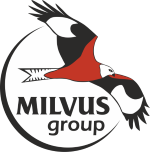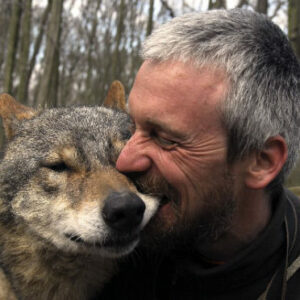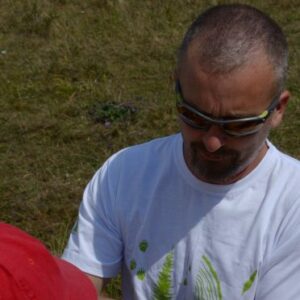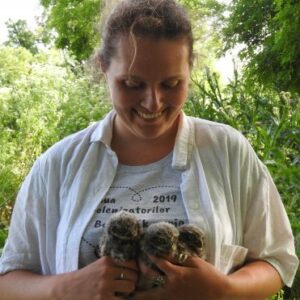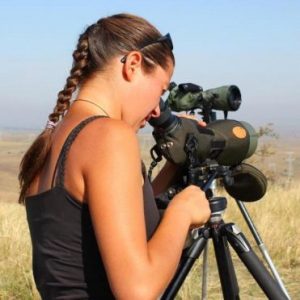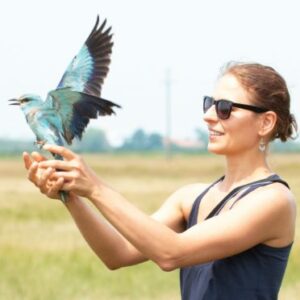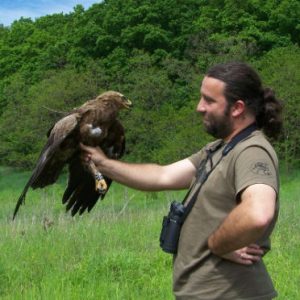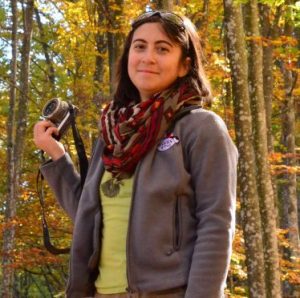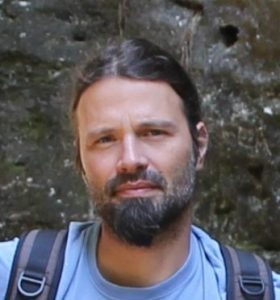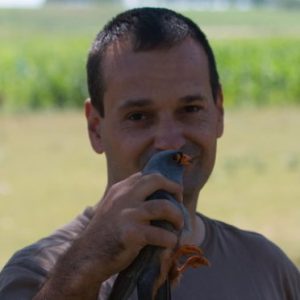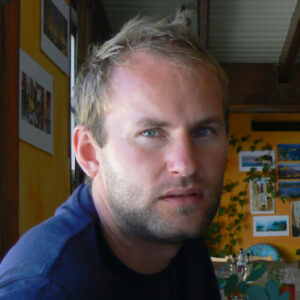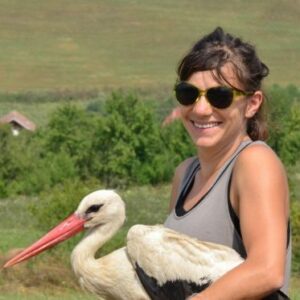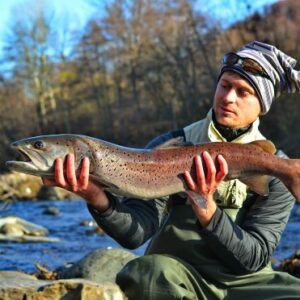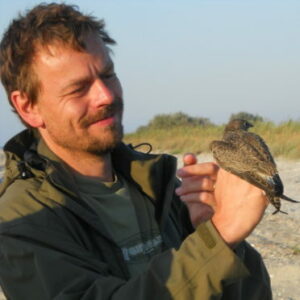News
Ecology
The Red-footed Falcon Falco vespertinus is a small size, migratory raptor. This species is the sole colonially breeding raptor of the region. It does not build a nest, its colonies are formed in rook Corvus frugilegus colonies or in loose colonies of magpie Pica pica nests, and also breeds solitarily. It is a bird of open habitats fringed with smaller forest shelter belts and groups of trees that provide nesting and roosting facilities. It inhabits steppe, pseudo-steppe, wooded steppe, bushy taiga and other extensive agricultural habitats. In the Carpathian Basin , stable colonies are formed close to grasslands.
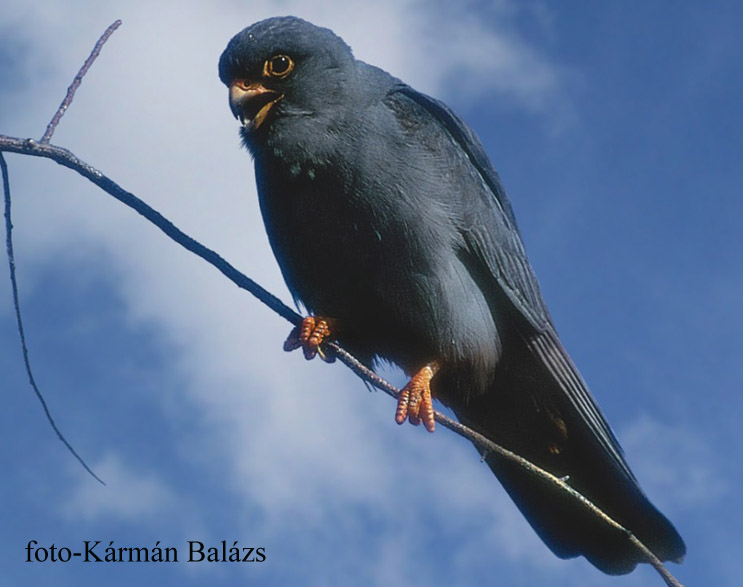
The birds return from their wintering grounds in mid April, but egg laying is usually delayed until mid-May. Incubation is 22-23 days, which is the shortest amongst European falcon species, the fledging takes 27-28 days, the usual numbers of eggs is 3-4 (2-6). The species is an opportunist hunter, its main prey items are invertebrates ( Orthoptera, Odonata, Coleoptera ) but small mammals e.g. Microtus arvalis or other vertebrates e.g. Pelobates fuscus can be important, too.
Highly gregarious especially during migration, common night roosts are formed from the end of August in the Carpathian Basin and huge (hundreds, even thousands) number of birds can gather at a roosting site. Migrates on a broad front and long range, winters in southern Africa .
Distribution of the species
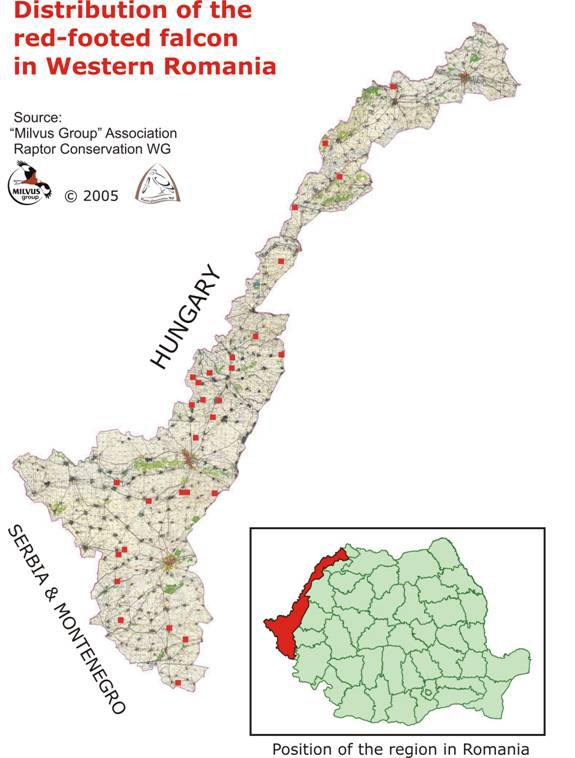
Breeding range extends from Central and Eastern European steppe habitat throughout North Central Asia to Lake Baikal . The Central European population of the species is on the western perimeter of the species range, and is constrained within the natural borders of the Carpathian Basin and is distributed in three countries, namely Hungary , Romania and Serbia Montenegro. In Romania the breeding population of the red-footed falcon is divided into two distinct sub-populations by the Carpathians. The western one (see map), which forms a coherent breeding population with Hungarian and Serbian birds, is approximately 200 pairs, 30% of the estimated Romanian population. The eastern sub-population is situated near the Black Sea , cc. 500-km from the western one.
Data on worldwide abundance and distribution of the species show that the population is steadily decreasing. A similar trend can be observed in the Carpathian Basin where a dramatic population fallback is experienced in the past decade. Our results from previous years show, that the population of the red-footed falcons in the Western Plain is decreasing on an alarming rate, too.
Main threats in Western Romania

- loss and degradation of natural nest sites – Rooks and Rookeries are regularly persecuted, by shooting into the nests, killing birds and cutting of the trees
- degradation of feeding habitat and loss of food resources – habitat loss caused by the plough of the pastures around the colonies (as a direct result of such interventions, the locusts and other important prey-species are disappearing from the area)
- increased mortality caused by electrocution – the risk of electrocution is high where medium voltage power-lines run close to colonies because both adults and freshly fledged juveniles favour these tall objects for perching ; power-lines in the vicinity of autumn roost sites are also dangerous, because large concentrations of birds use cables and pylons for pre-roost gathering
Activities
To increase the knowledge about the distribution, size and trend of this sub-population and the threats which cause the decreasing of it, and at the same time also to enhance the conservation status of this species, the specialists of the Raptor Conservation Working Group have been worked on different issues:
- annual census of the breeding population – since 1997
- ringing and data collection (ringing date, location, biometrics) – since 1997
- initiating of the “Red-footed Falcon has to be saved!“ program – in 2004
- raising funds to ensure the long-term conservation of the species – the Milvus Group contributed significant to the writing of an international LIFE Nature project documentation: “Conservation of Falco vespertinus in the Pannonian Region” , accepted by the European Commission for co-financing.
